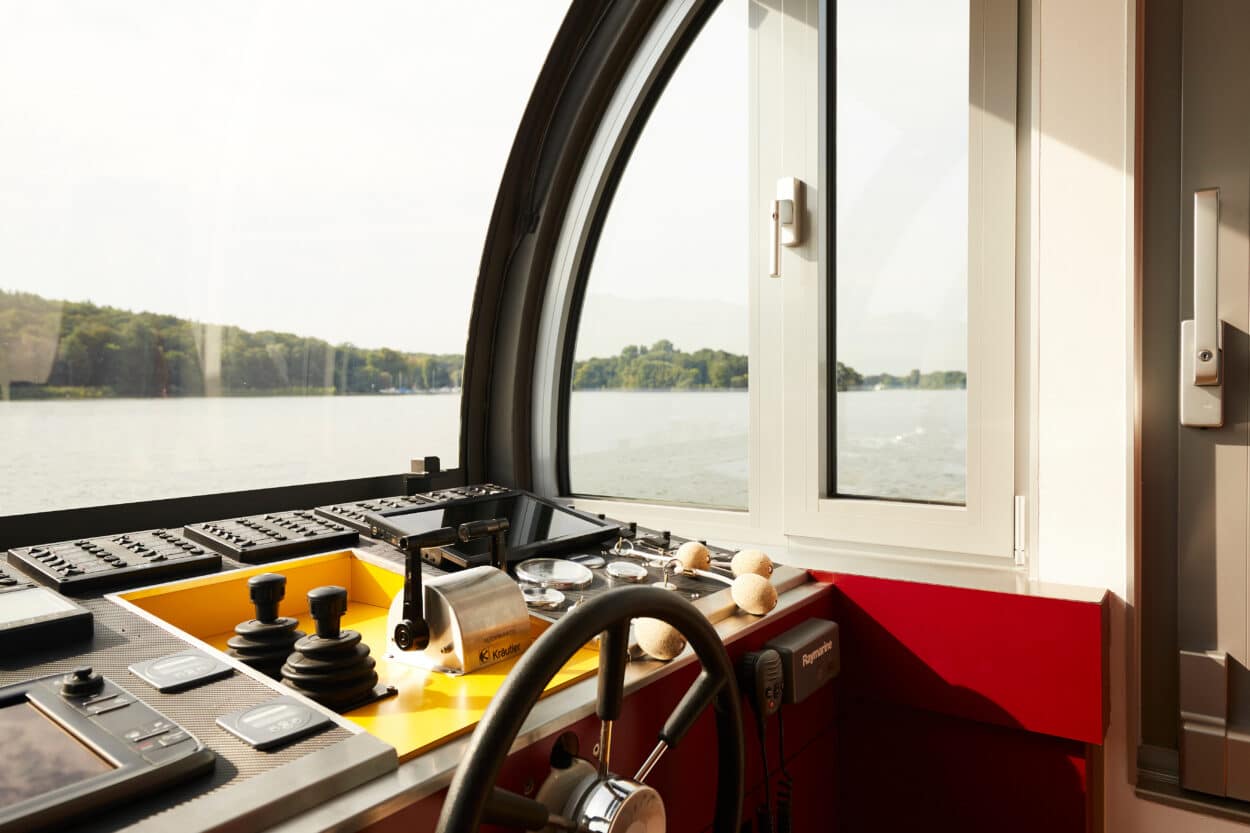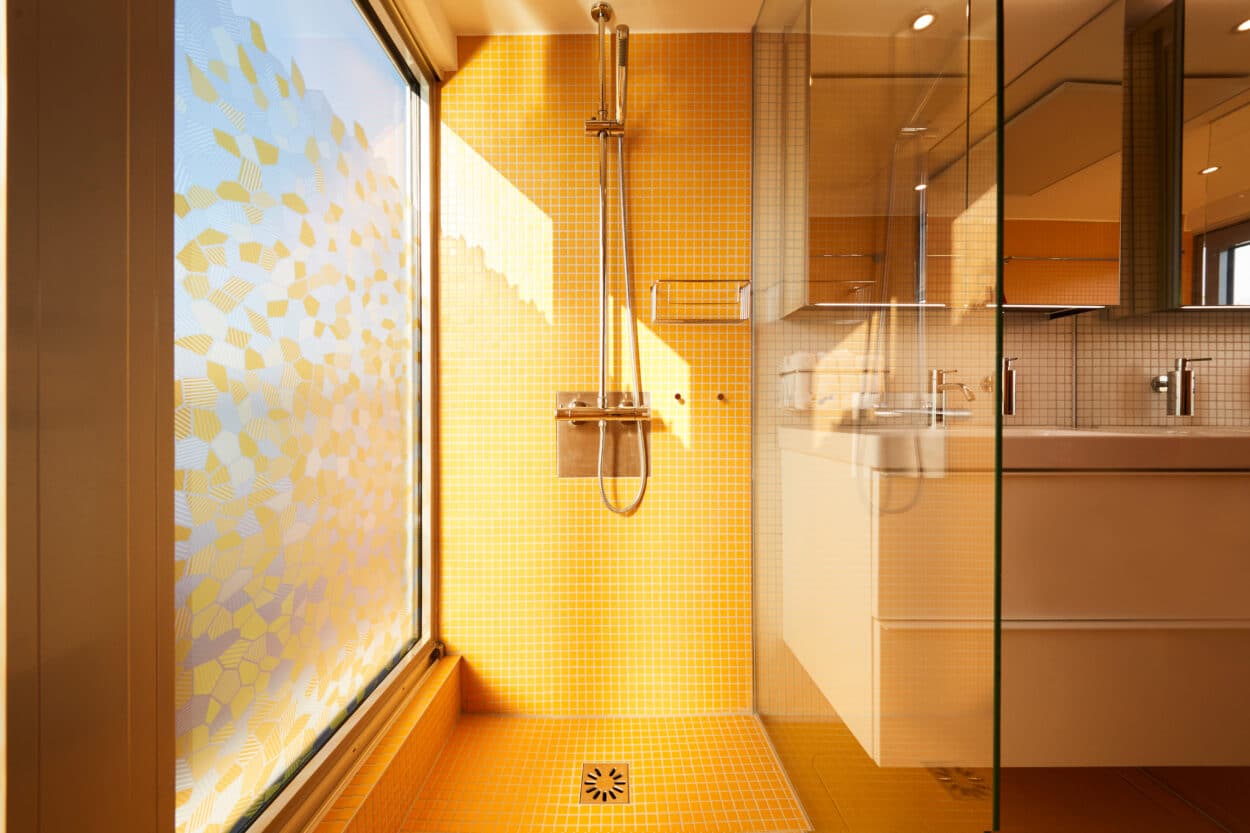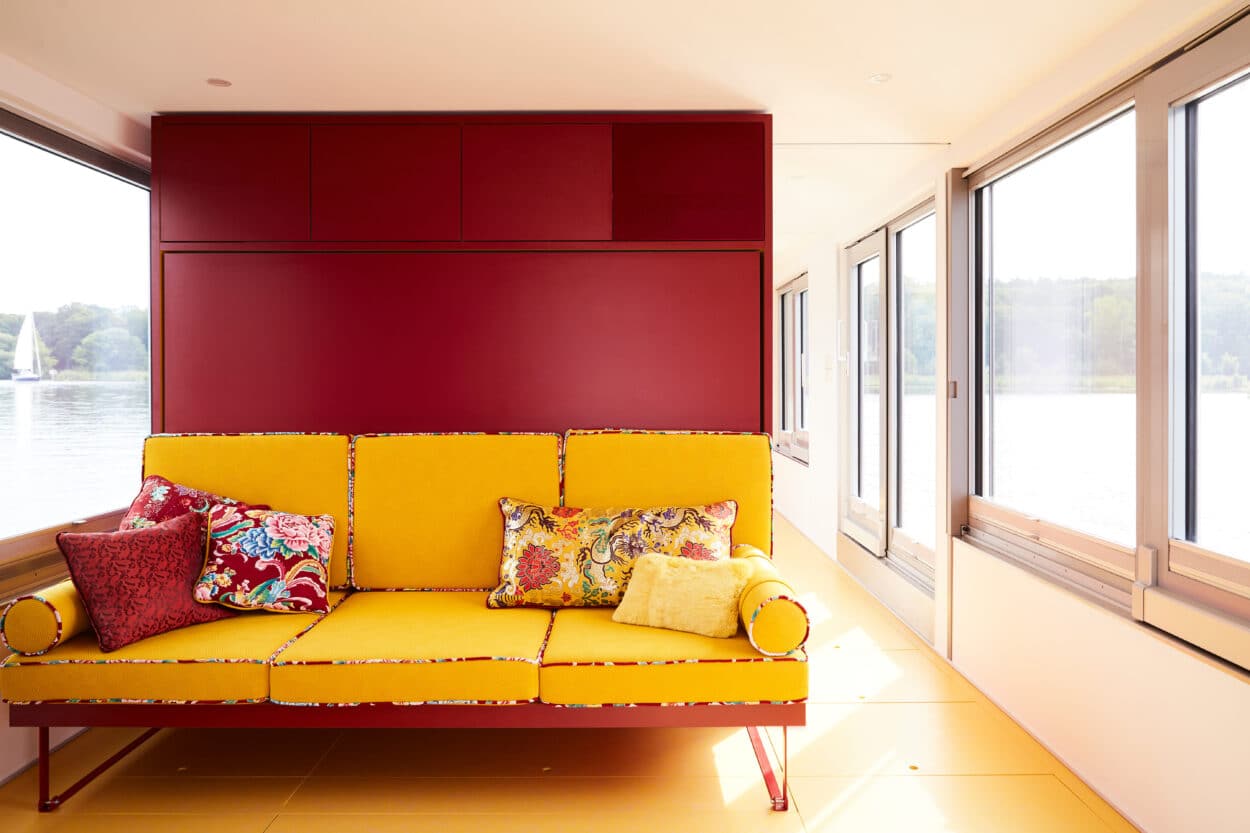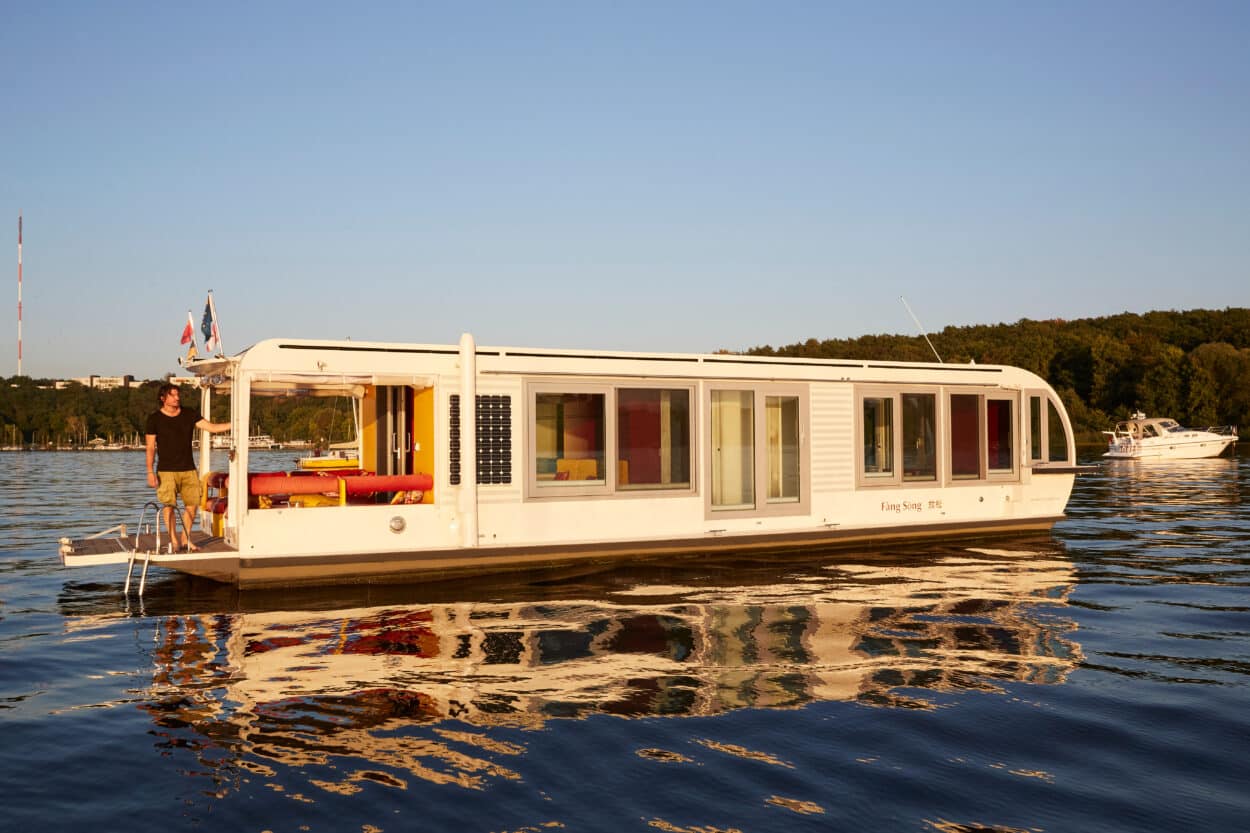Floating on the waters of Berlin, a fully solar-powered motorboat becomes a tiny home after being redesigned by Crossboundaries, a Chinese/German firm with offices in Beijing and Frankfurt.
In March 2022, Chinese architecture firm Crossboundaries completed the project of redesigning a fully solar-powered motorboat with high-end, tiny-home characteristics that enable it to function as a slow-motion traveling nest. The client Marianne Friese, attracted by the boat’s bus-like exterior, named the personal reenergizing retreat “Fàng Sōng 放松”, which translates from Chinese into “Relax”.
With the world seemingly turned upside down due to pandemic travel restrictions, the effects of global warming, conflicts, an energy crisis, and more, the time has never seemed more urgent for a refuge with a high level of self-sufficient energy and the ability to remain mobile despite mounting challenges.
The current architectural agenda debates the notions of public-private and temporary-permanent. While a connection between home and real estate ownership previously prevailed in the market, we’re now shifting toward a network of commodities that can be moved to different places. The original design of the motorboat portrayed work that stemmed from necessity. The new “look” of the tiny home exemplifies design through willingness.
“One of the great attractions of urban living is the notion of being able to easily access all the services and goods you need. But what if those services came to you?” as stated by the architecture group Archigram in 1964 with The Walking City.


A Floating House: Compact and transformable
Crossboundaries has an interest in testing the flexibility of micro-dwellings in which the rooms can accommodate multiple roles, so their implication in the “Relax” motorboat retreat project greatly benefited the client. The firm has already completed a wide range of small-scale interior designs and architectural projects of larger sizes.
Although Crossboundaries was founded in Beijing, China, in 2005 by Binke Lenhardt and DONG Hao; the firm established a partner office in Frankfurt, Germany, in 2012 by Binke Lenhardt and Antje Voigt. In this regard, it makes perfect sense that the client would relate well with the architectural team at Crossboundaries.
The collaboration on the motorboat resulted in a set of interlinked and multi-purpose areas in the boat with a length of 15m and a width of 4m. It includes a fully hidden bed with a function to close the “helm stand”, which hides the more technical equipment of the boat, achieving a calmer sense of home. Additionally, it exhibits a pop-up table for the kitchen area and a hidden foldable desk included in a cabinet, providing a “work-from-home” environment.



The boat is “smart and self-powered” due to innovative solutions in terms of solar energy, heating source, water, and waste management. On sunny days, the houseboat is fully self-reliant on its solar panels, with an average range of 50km per day. A pellet stove, remotely controlled by an app, was installed to satisfy heating demands with a source of renewable energy. In the future, the owner plans to add a water purification system and a biological sewage treatment unit to upgrade the boat for long journeys.
In terms of the renovation, the architects focused on research in material quality and durability which led them to achieve an impeccable level of craftsmanship. In fact, the project required the expertise of a local master carpenter and other professionals who contributed to the results-driven approach.
This ‘Tiny Home on the Water’ can be conceived as a unit of the city, containing a comprehensive set of urban resources. Ideally, in the future, people can free themselves from too many possessions and embrace denser, high-quality spaces that enable more flexible ways of life.










